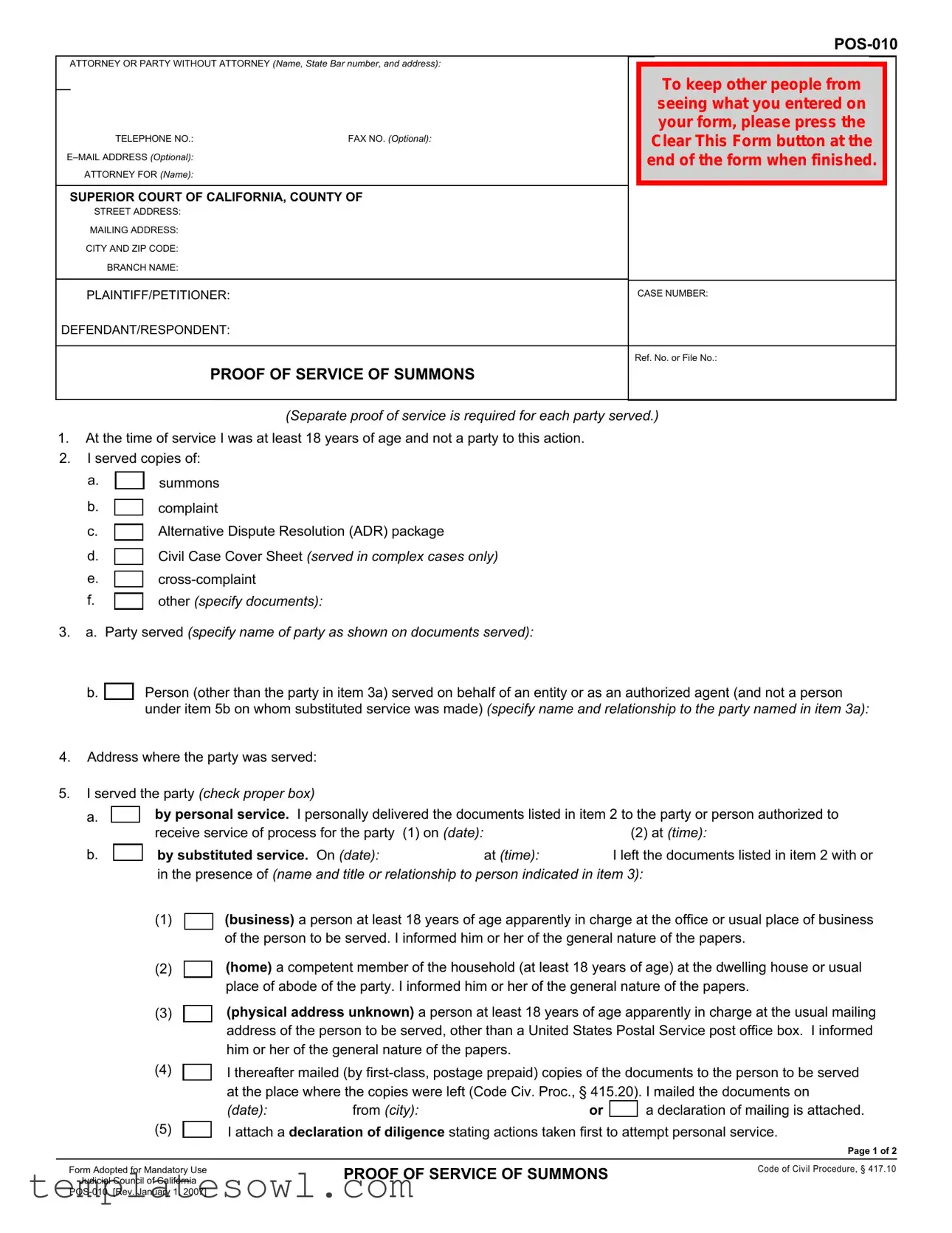What is a Proof of Service form?
The Proof of Service form is a legal document used to provide evidence that documents related to a legal case have been delivered to the relevant parties. It ensures that all parties involved have received necessary paperwork, such as summonses or complaint notices, which is crucial for the legal process to proceed smoothly.
Who can serve documents and complete the Proof of Service form?
The individual serving the documents must be at least 18 years old and cannot be a party to the action. This means that friends, family members, or professional process servers are often used to serve documents and complete this form. It is important that the server follows the specific rules for service to ensure it is legally valid.
What information is required on the Proof of Service form?
Key details need to be included on the form. This includes the names of the parties served, the type of documents delivered, the method of service (personal, substituted, or mail), and the date and time of service. Further, the server's information and a declaration affirming that the documents were served correctly must be included.
Can I serve documents by mail using the Proof of Service form?
Yes, documents can be served by mail. If you choose this method, you must send the documents using first-class mail and include a Notice and Acknowledgment of Receipt. The recipient must then sign this acknowledgment, which should be attached to the Proof of Service form. This provides proof that the documents were indeed mailed and received.
What does “substituted service” mean?
Substituted service is when the documents are not delivered directly to the person being served. Instead, they are left with another individual who is at least 18 years old and is in charge of their home or business. The server must also mail the documents to the intended recipient afterward, ensuring they have evidence that the documents were sent.
What happens if the Proof of Service is not completed correctly?
If the Proof of Service form is not filled out correctly, it could lead to complications in the legal process. A judge may dismiss your case or delay proceedings until proper service is completed. Thus, it is critical to ensure that all information is accurate and comprehensive.
Is there a fee associated with serving documents?
Yes, generally, there is a fee for having another party serve legal documents. The amount may vary depending on whether the server is a professional process server or a local sheriff. The fee amount should be specified on the Proof of Service form.
What is the importance of the "Notice to the Person Served" section?
This section is vital because it informs the individual being served about the nature of the documents and their rights. It ensures that they are aware of the legal actions being taken against them, which is key to due process. It must be completed accurately according to the various circumstances of the party being served.
Do I need to keep a copy of the Proof of Service?
It is recommended to keep a copy of the completed Proof of Service for your records. This serves as evidence that the required documents were served and provides you with a reference point in case any questions arise during the legal process.
What do I do after the Proof of Service is completed?
Once the Proof of Service is completed, it should be filed with the court as part of the overall case documentation. This provides the court with confirmation that all parties have been properly informed about the legal action, which is a key step in moving the case forward.





 summons
summons




 a declaration of mailing is attached. I attach a
a declaration of mailing is attached. I attach a 